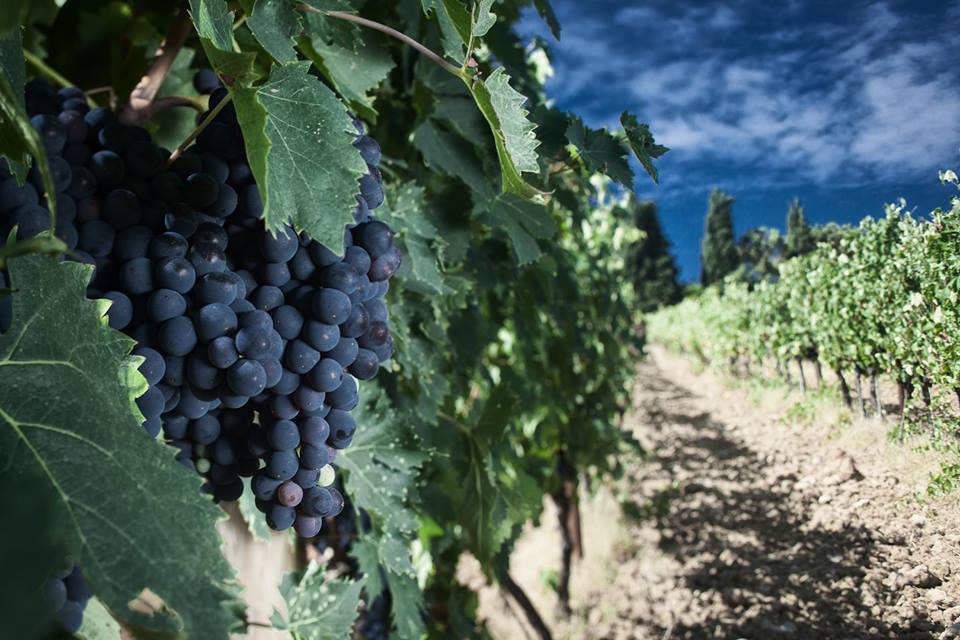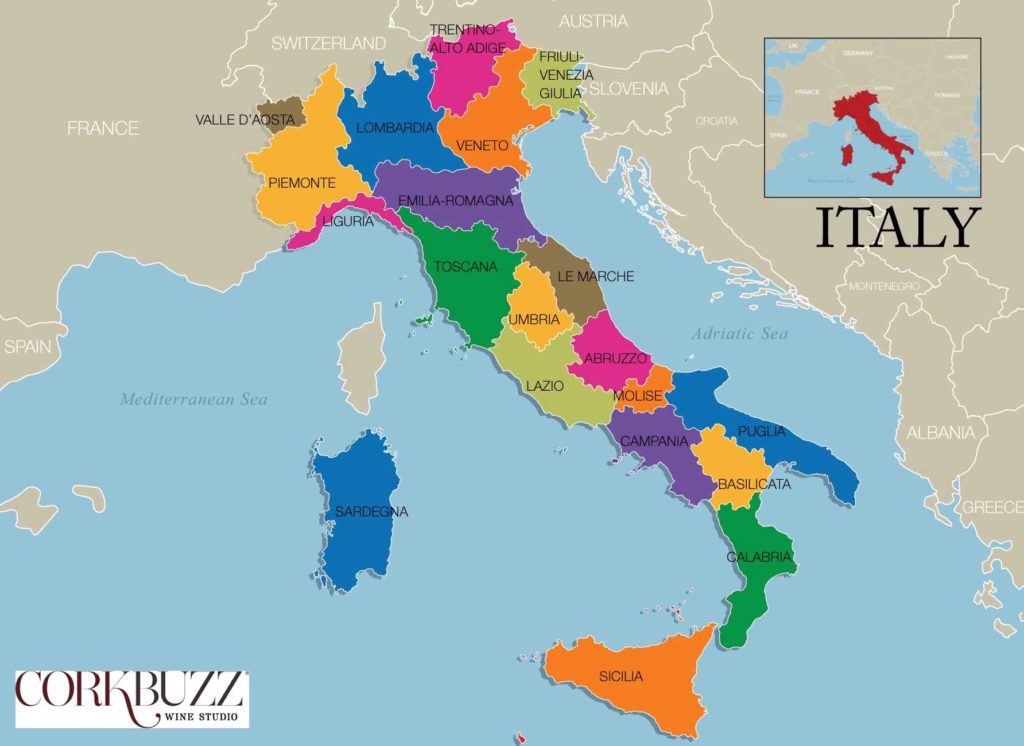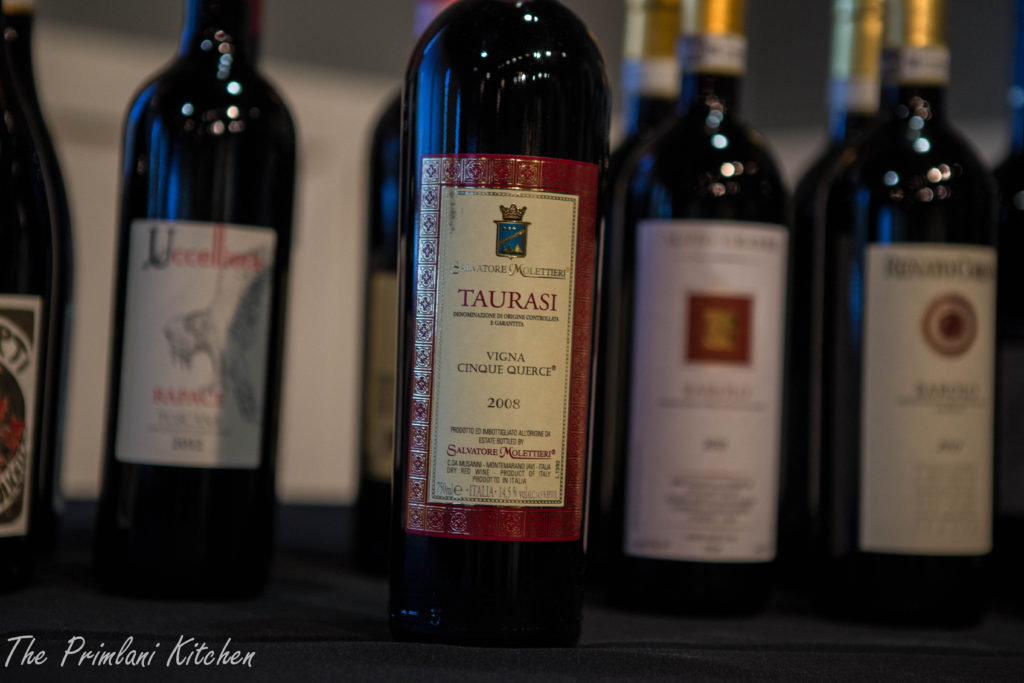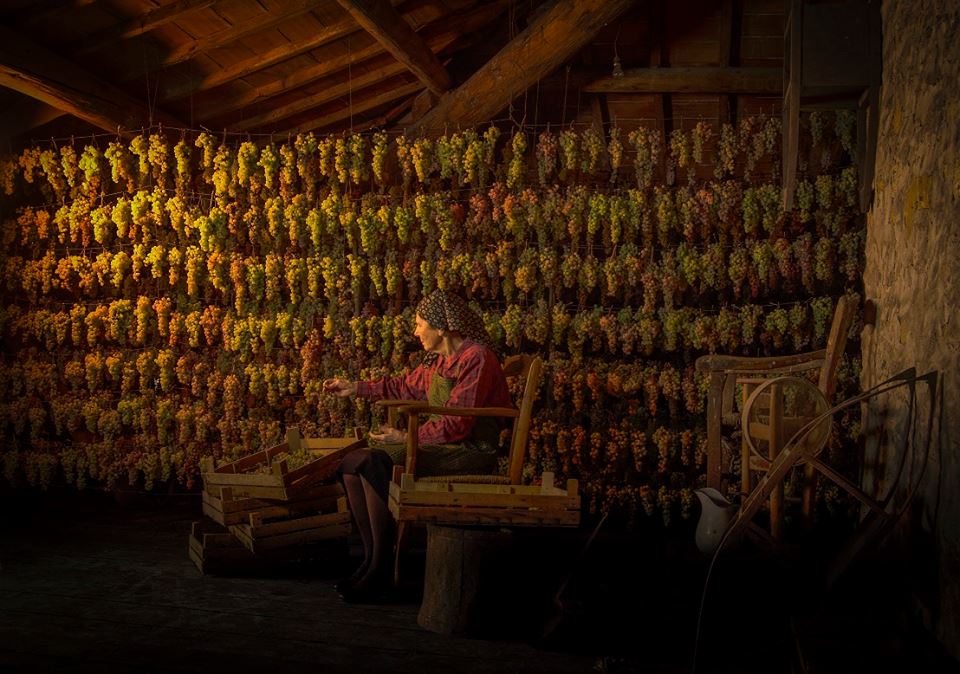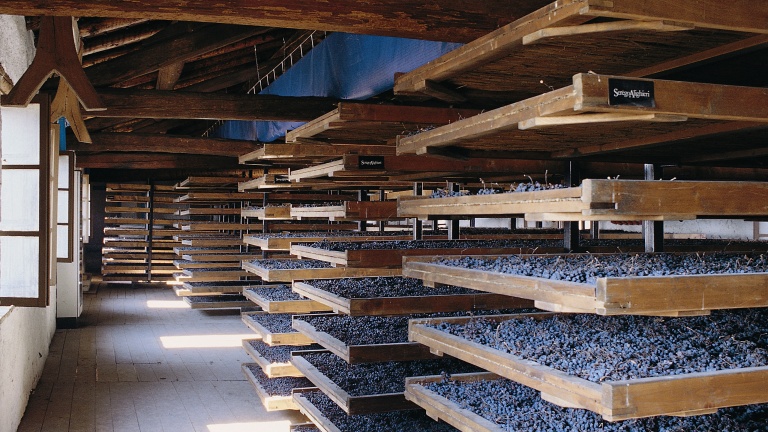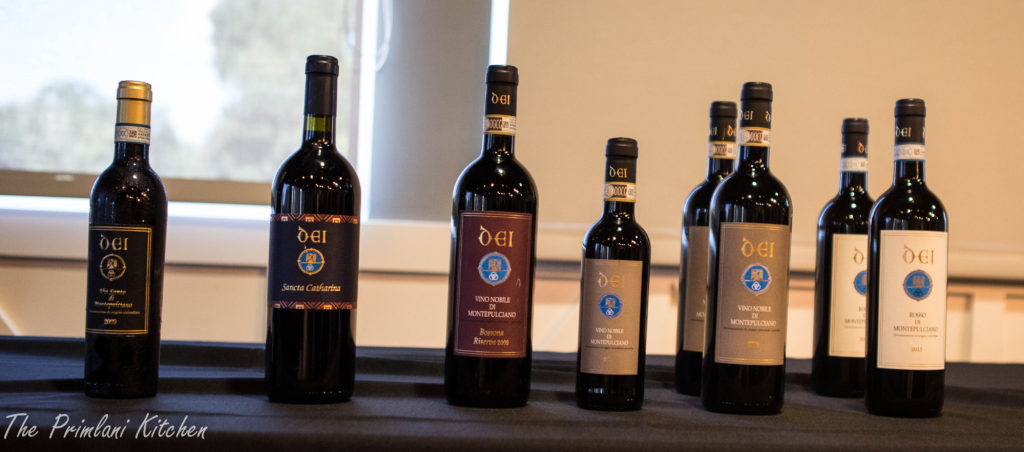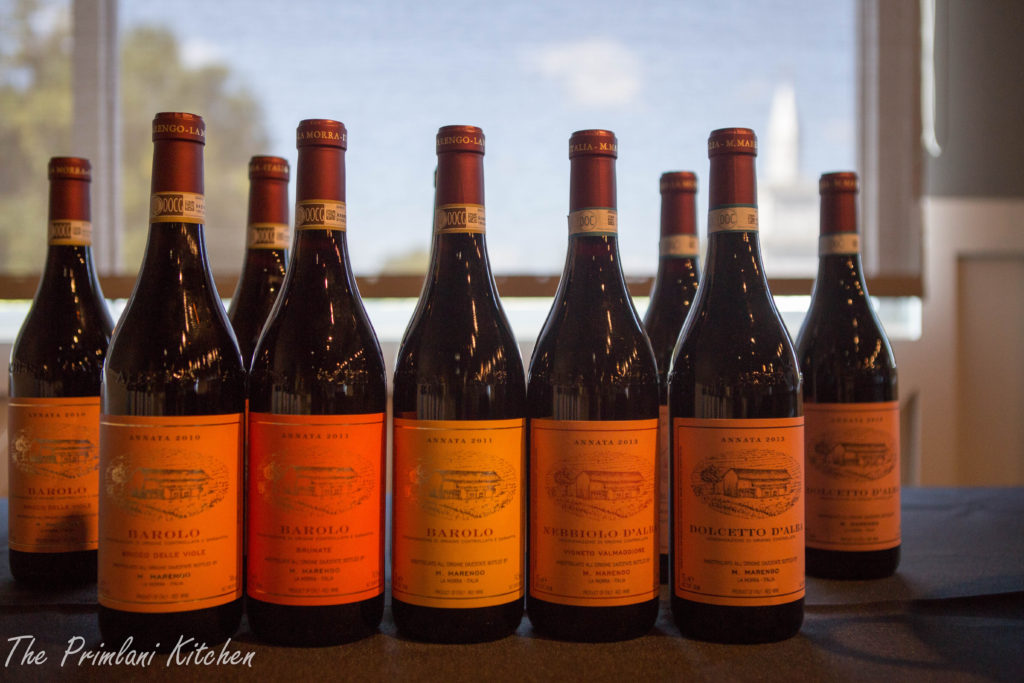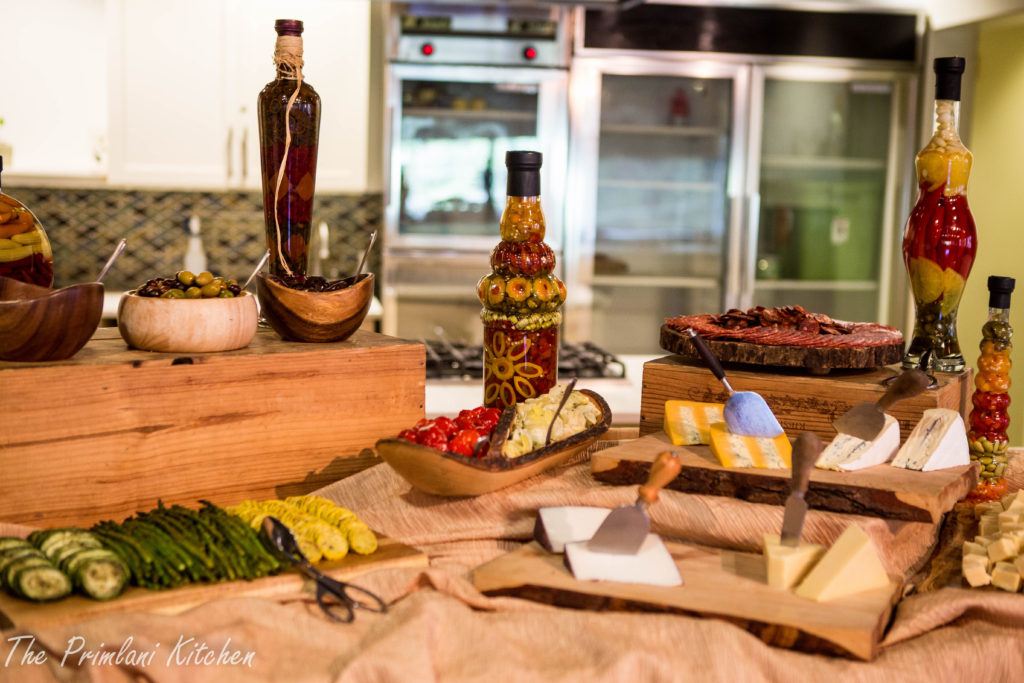Drool Alert: This article will induce an uncontrollable urge to drink wine, I recommend having a bottle of your favorite Italian wine handy.
The ancient Greeks called Italy Oenotria, the land of wine. There is simply no region or district that does not produce wine. 900,000 plus registered vineyards scattered through Italy’s twenty regions produces a dizzying a number of wines based on more than a thousand grape varieties – Wine Bible.
Italian wines can vary substantially in flavor, texture, and body, even when the wines being compared are the same type. Ancient traditional wine making, sophisticated modern methods, distinct micro-climates, varied soils all contribute to unique terroir-driven wines.
So be it Veneto’s ubiquitous spumante Prosecco, from Bortolotti; Italy’s smoky, nutty white wine Soave from Gini; some of the longest lived white wines in Italy Verdicchio from Tavignano; intense Amarone from Mazzi; Tuscany’s refreshing white wine Vernaccia from Fontoleoni; seductive Barolo and Barberesco from Marengo, Moccagatta, Conterno, Albino Roca; Sangiovese – one of the greatest red grapes of Italy, producing the romantic Chianti from Dievole, Tuscany’s most revered wine Brunello di Montalcino from Brizio; Campania’s volcanic soils Taurasi from Colli di Lapio; bright, citrusy white wine from island of Sardinia Vermentino from Mura. Marc de Grazia with Terroir Selections showcased the depth and diversity of Italian wines where each wine expresses balance and typicity.
Bortolotti: Located in the heart of Veneto in the village of Valdobbiadene, Bortolotti makes spumante (sparkling) wines with Prosecco grapes (historically called glera) made in the Charmant method. Crisp, fruity, easy to drink these are the perennial aperitivo sips as well as the primary component of the classic brunch cocktail – Bellini.
Prosecco Valdobiadenne Superiore Brut NV made with 100% glera is an elegant and dry apertif wine. Prosecco Treviso Extra Dry NV – young, fresh, and fruity, a wallet-friendly summer refresher. Lagrein Rosato Brut NV – Made with 100% Lagrein, this fragrant and soft expression of the tannic Lagrein will be much appreciated by red wine drinkers. Prosecco Cartizze – Made with 100% Glera grape, dry, crisp, delicious.
Tenuta Tavignano: Husband and wife duo Stefano Aymerich di Lacaroni and Beatrice Lucangeli resurrected Verdicchio to it’s former glory by restructuring their ancient estate in 1990s. A quintessential “fish” pairing of the Adriatic coast, Verdichhio from Castelli di Jess are green-tinged wines expressing floral and fresh stone fruit notes finishing with a slight bitter almond tang,
Castello di Jesi Verdicchio Superiore “Villa Torre” 2014 – Made with 100% Verdicchio expresses vibrant freshness with crisp green apple, stone fruit and almond notes.
Rosso Piceno Libenter 2012 – Table wine at best, the Libenter Rosso is a blend of 70% Montepulciano 25% Sangiovese 5% Cabernet Sauvignon. Montepulciano, the second most planted grape in Italy (Guild of Sommelier) produces ripe, tannic and full-bodied wines of deep color.
Fontaleoni: The first and only DOCG in Tuscany for white wine Vernaccia di San Gimignano produces crisp, pink grape-fruit tinged wine from the Vernaccia grape. Fontaleoni is run by Franco’s son, Matteo and daughter Simona (since parents tragically passed away in 2014). Sadly time was not on our side to taste – Vernaccia di San Gimignano 2013, Vernaccia Casanuova 2014, Vernaccia Riserva 2010, red Chianti Colli Senesi 2013.
Colli di Lapio: The Romano Family winery run on the helm by Mrs. Clelia Romano. Lapio in Campania is one of the few communes where both the Fiano di Avellino DOCG and the Taurasi DOCG are found.
Fiano di Avellino 2013 – Smoky and slightly nutty, absolutely mesmerizing. Taurasini “Donna Chiara” 2013 – Estate grown 100% Aglianico, 12 months in used barriques. Taurasi Andrea 2011 – Maturation in new barriques for 11 months. Finishing in the bottle for 18 months. Aglianico, especially when crafted classically has captured my heart.
Gini: A a family of vignerons since 1500s, Claudio Agronomist inherited the reins from his father Olinto and now manages the estate with his wife Sandro Oenologist and son Matteo cellar master. Soave singularly the most important white wine zone in Veneto comprises of wines made with a minimum 70% Garganega, Trebbiano di Soave, and Chardonnay.
Focused, mineral-driven, and energetic, Gini Soave’s are a burst of energy and much needed freshness especially when dealing with Italy’s muscular tannic wines.
Soave Classico 2014 – 100% Garganega made from 60+ old vines, boast intensely fragrant white flowers, white peach, and tropical fruit.
Soave Classico “La Frosca” 2012 – Hand-picked, fermentation without sulphites in steel vats and French Oak, 8 months on lees showcase enticing floral notes, yellow apple, ripe citrus, mineral-driven with a savory, almond finish. Absolutely delicious but will age beautifully too.
Soave Classico “Salvarenza” 2011 – Salvarenza is a tiny piece of the La Frosca Cru vineyard, blessed with 100 year old vines (third of the vines ungrafted, unaffected by phyloxera). 100% Garganega, rich in limestone, fermentation in oak followed with maturation in barriques. Tantalizing ripe stone fruit aromas, full bodied with tickle of baking spice, it’s Soave at it’s finest.
Recioto di Soave “Re Nobilis” 2008 – “Re” (Recioto) and “nobilis grapes infected by the elusive Botrytis Cinerea, produced only in special vintages with 100% Garganega showcase golden-hued nectar, bursting with complex candied fruits, and vanilla with a persistent vibrant finish.
Malabaila: Owned by the Count Malabaila family since the beginning of the fifteenth century. today the estate is managed by Costanza Carrega Malabaila and by her daughter Lucrezia together with Valerio Alfredo Falletti, oenologist and passionate agronomist.
Langhe Bianco “Favorita” 2013 – Made with 100% Favorita a fashionable aromatic wine known as Vermentino in Sardinia, Pigato in Liguria, and Rolle in South France. Roero Arneis 2013 – 100% Arneis from the sandy soils of Roero, low yielding variety produces intensely perfumed yet dry wine. Rosato “Donna Costanza” 2013 – Rose wine made with 100% Nebbiolo. Roero Superiore “Bric Volta” 2011 – 100% Nebbiolo meant to be consumed young with primi course.
Mura: Filippo Mura founded the estate in I979. Since 1999 the children Marianna and Salvatore manage the estate. Marianna is the wine maker with degree in biology, oenology, and viticulture. Salvatore. an agricultural technician manages the vineyards. The estate is located in Sardinia, a Mediterranean island 125 miles off the coast of Italy offering a variety of autocthonous vines.
Vermentino di Gallura “Cheremi” 2014 – Cheremi translates “love me” in the Sardinian local dialect is made with 100% Vermentino of Gallura, hand-harvested, exuding elegant mineral-driven aromas. Vermentino di Gallura “Sienda” 2014 – Is a late harvest Vermentino showcasing ripe fruit and honey with notes of sage and of juniper berries. Cannonau di Sardegna “Cortes” 2014 – Sardinian name for Garnacha in Spain as Garnacha and Grenache in France is a full bodied dry, fruit driven wine.
Mazzi: The two sons of Roberto Antonio and Stefano, are now at the helm and continue the tradition of making excellent Valpolicella Classico, Amarone and Recioto della Valpolicella.
Recioto della Valpolicella and Amarone wines are made with the labor-intensive method of Appassimento process where grapes are dried for three to four months in special lofts (fruttai) before fermentation to concentrate the sugars and extract. Grapes destined for Recioto della Valpolicella are typically dried for four months resulting in semi-sweet to sweet wine whereas Amarone is fermented to dryness. These raisinated grapes loose one third of their weight to produce full bodied, rich, high in alcohol wines packed with chocolate and dusty notes.
Valpolicella Classico Superiore “Sanperetto” 2013 – A blend of 65% Corvina, 5% Corvinone, 20% Rondinella and 10% Molinara grown in calcareous, silty, clay soils. Ruby red in colour with aromas of cherry, violet and pepper, serve slightly chilled with aperitif.
Amarone “Punta di Villa” 2010 – 70% Corvina, 25% Rondinella, 5% Other allowable red varieties, all from 30 year old vines planted in calcareous clay soils. Rich and full bodied with chocolate and tobacco nuances.
Valpolicella Classico Superiore “Poiega” 2012 – A blend of 70% Corvina and Corvinone 25% Rondinella 5% Molinara. The grapes are dried for 40 days in boxes before being fermented in stainless steel and then aged in used French-oak barriques for 18 months.
Recioto della Valpolicella “Le Calcarole” 2011 – A blend of 70% Corvina and Corvinone 20% Rondinella 10% Croatina dried and pressed at the end of February after harvest. Mouthfeeling rich, stewed plums, baking spice, it’s a wine best consumed with a roast or nutty aged cheese.
Dei: Established in 1964 by Caterina’s grandfather Alibrando Dei, Caterina has been managing the estate since 1991 with the assistance of oenologist Paolo Caciorgna and Jacopo Felici agronomist/oenologist.
Rosso di Montepulciano 2014 – A blend of 90% Prugnolo Gentile, 5% Canaiolo Nero, 5% Merlot. Vino Nobile di Montepulciano 2012 – A blend of 90% Prugnolo Gentile (clone of Sangiovese) 10% Canaiolo nero exhibits sour cherry, dried violet, medium bodied.
Vino Nobile di Montepulciano “Bossona” Riserva 2009 – 100% Sangiovese sourced entirely from vineyards in the Bossona Cru, aged in tonneaux for 36 months and finished in bottle 12 months. Black cherries, leather, full bodied wine – fantastic effort. Sancta Caterina 2010 – A super-Tuscan with 30% Cabernet sauvignon 30% Sangiovese 30% Syrah 10% Petit Verdot. Powerful wine with raspberry, blackberry, mocha notes, full bodies with sweet tannins.
Vin Santo 2008 – Tuscany’s holy sweet wine made from 50% malvasia, 30% trebbiano,
20% grechetto. A customary finale to a family Tuscan meal almost always served with small biscotti called cantucci. The grapes are dried naturally followed with 5 years of aging in small oak casks to produce delicate nutty, stewed fruit resembling a sherry rather than dessert wine like Sauternes.
Dievole: A corner of Tuscany’s paradise where the dialogue between nature and man remained uninterrupted leading to the apt origin of Dievole – Dio Vuole – God Wants!
Dievole Chianti Classico 2013 – 100% Sangiovese, red berries, violet, tea spices, a fine effort.
Podere Brizio: A small gem in the Montalcino hills, Brizio is part of IAG Toscana Srl, together with Fattoria Dievole in Chianti Classico. Podere Brizio focuses on sustainable agriculture with no chemical additives. Age their wine in 54-hectolitre French oak barrels that not Alliers roasted to preserve the fruit and maintain it’s integral purity of varietal.
The Rosso di Montalcino 2013, a baby Brunello, 100% Sangiovese exhibiting red cherries with savory spices meant to be drunk young with your daily meal though could easily cellar for a few years too.
Brizio Brunello di Montalcino 2010 – 2010 being an exceptional growing season, I would grab all the Brunellos I can lay my hands on. Especially budget friendly expressions such as Brizio showcasing bright cheery, red licorice, smokey tobacco balanced with juicy acid. Brizio Brunello di Montalcino 2004 – Drinking beautifully now, dark cherries, leather, with a long and silky finish.
Albino Rocca: A family of winemakers for four generations, today the late Angelo Rocca’s son in law Carlo and his three daughters Paola, Monica and Daniela manage the family winery.
The Nebbiolo d’Alba 2012 and Barberesco 2012 both made with 100% Nebbiolo. The Barbaresco “Ronchi” 2012 is a muscular wine with plenty of personality. Barbaresco “Ovello Loreto” 2010 from sandy soils produce rich and intense dark berries, savory spices, with supple tannins.
Moscato d’Asti 2014 – Slightly sparkling (frizzante) sweet wine made from 100% Moscato Bianco.
Moccagatta: Established in 1952, today Francesco and Sergio carry on their Father’s legacy producing Barbaresco made in three crus of radically different character, Dolcetto, Barbera, and Chardonnay.
The line up consisted of Langhe Chardonnay 2014, Barbera d’Alba 2013, Barbaresco 2012, Barbaresco “Bric Balin” 2011, and Barbaresco “Basarin” 2012. Bric Balin 2011 from town of Barberesco dark cherries, sweet baking spice, dusty tannins can easily be consumed young. Basarin 2012 on the other handfrom the town of Nieve is an beautiful and intense wine that needs to age.
Drum roll please! Let’s taste the king of Italian grapes – Nebbiolo to envelope ourselves in the hauntingly seductive world of Barolos.
Mario Marengo: Established in 1899, Marco Marengo manages the six hectares solely, including the prized one hectare allocated in Le Brunate, considered a grand cru of La Morra in Langhe.
Dolcetto d’Alba 2013 – Little sweet one aptly named for it’s low acid especially in comparison with the high acid wines of Barolo and Barberesco. Delicious in it’s youth not to mention a great value alongside a serving of pasta or mushroom pizza. The entry level Nebbiolo “Valmaggiore” 2013 excudes rose petals, sweet spices with medium weight.
Barolo “Brunate” 2011 – Stylish Barola Marengo seduces us with dark cherries, licorice, sweet baking spices with a persistent finish. Did I mention the enticing aromas? 2010 as a vintage bestowed cooler than normal temperatures, the Barolo “Bricco delle Viole” 2010 seemed tightly wound finishing with broad dusty tannins. I would love to taste this again in 5 plus years.
Paolo Conterno: The estate, established in 1886, has belonged to the Conterno family for four generations.
Dolcetto d’Alba “L’Alto” 2013 – Ruby red with purply hues; intense, delicate, vinous nose; soft, smooth, dry taste with a nice almondy streak. Barbera “Bricco” 2013 – Fresh cherries and cranberries, sweet spices, soft with tangy acidity.
Barolo “Riva del Bric” 2010 – From Monforte d’Alba, floral bouquet with fresh herbs, robust body and persistent finish, drinking beautifully now. Barolo “Ginestra” 2010 – From the esteemed Ginestra vineyard, spicy, balsamic undertones, powerful yet balanced, silky tannins. Barolo “Ginestra” Reserva 2007 – Intoxicating aromas of dried cherry, rose petals, tobacco, muscular tannins, a commendable effort for the rough 2007 vintage.
Food and wine is one of the cornerstones of Italian culture perhaps as famous as Italy’s historic and artistic assets. No other country’s offerings are as married to cuisine as in Italy. I can not stress enough how much Italian wines crave food. The much needed sustenance was provided by Cusiniers, Orlando’s premium chef catering company.
It’s comes as no surprise that my deep-rooted passion for Italy and Italian food extends to wine. The entire gamut of Italian varietals from their indigenous grapes to the modern Super blends have captured my wine inquisitiveness and constantly surprise even me with their terroir and cultural driven flavors.
Until next time, have a delicious day!!
